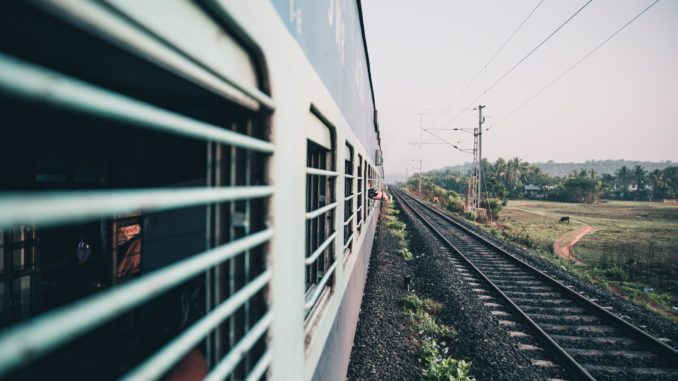
This year is the 60th anniversary of the Dec. 14, 1961 crash involving a school bus and train that killed 20 children in Weld County. That crash remains the deadliest traffic crash in Colorado history.
Rail Safety Week was (RSW), Sept. 20–26. The Colorado Department of Transportation is reminding motorists, pedestrians, and bicyclists to always use caution when approaching rail crossings.
Last year there were 20 traffic crashes involving trains in Colorado, resulting in nine injuries and three deaths. To reach the public, CDOT has created videos that provide warnings about crossing railroad tracks where there may not be gates or signals, known as passive crossings. Such crossings are common in rural areas of the state. In urban areas, RTD has released its own video on the importance of rail safety.
Every year in North America, 2,100 people are killed or seriously injured around tracks and trains — often at at-grade crossings.
“Safety at railroad grade crossings is a critical issue that we must address through improvements in signals and by reinforcing the need for all travelers to be extremely careful at train tracks,” said Darrell Lingk, Director of the Highway Safety Office at CDOT.
Since 2017, RSW has saved lives by educating and empowering the public to make safe decisions around trains and tracks and raising awareness of the need for rail safety education. This annual week-long event is a collaborative effort among Operation Lifesaver, Inc., state Operation Lifesaver programs, and rail safety partners across the U.S., Canada and Mexico. The goal of RSW is to raise awareness of the need for rail safety education and empower the public to be safe near highway-rail grade crossings and railroad rights-of-way.
Operation Lifesaver, Inc., a national rail safety education organization, works in partnership with the U.S. Department of Transportation and other organizations to observe Rail Safety Week each year. The organization’s “Stop Track Tragedies” public awareness campaign shows the impact that rail-related incidents have on families – and communities. ”
Operation Lifesaver works with CDOT to prevent crashes. Upgrades at railroad crossings with warning lights and gates is part of the CDOT Whole System Whole Safety program.
By law, trains always have the right of way, and avoiding a train collision is the responsibility of the driver, pedestrian, bicyclist or motorcyclist. A train cannot swerve, stop quickly or change directions to avert a collision. A train traveling at 55 mph requires a mile to stop – the length of more than 17 football fields – after applying the emergency brakes.
CDOT urges motorists to follow these tips to stay safe at railroad crossings:
- When approaching a railroad crossing, slow down, look and listen for a train on the tracks, especially at passive crossings where there are no gates or warning signals.
- Look carefully in both directions before crossing a rail track, even during the day.
- Do not rely on past experience to guess when a train is coming. Trains can travel from either direction at any time.
- Never race a train. It is easy to misjudge a train’s speed and distance from a crossing.
- Before entering a railroad crossing, check that there is enough room on the other side of the tracks for your vehicle to cross completely and safely. Be aware that you may need to cross multiple sets of tracks at some railroad crossings.
- Never stop on railroad tracks. Keep moving once you have entered the crossing. To avoid a vehicle stalling, never shift gears on the tracks.
- If your vehicle stalls on a railroad track, quickly move away from the track and your vehicle at a 45-degree angle to prevent being hit by debris. Call the phone number on the Emergency Notification System sign or, if the sign is not visible to you, dial 911 for help.
Nationally in 2018, 270 people were killed at railroad crossings, according to Federal Railroad Administration data, which was a 10-year high. Of those, 99 people died after the driver went around lowered crossing gate arms. In fact, from 2014–2018, the 1,538 drivers that were struck accounted for 14 percent of all train collisions—these were preventable crashes caused by risky driving behaviors and poor decision-making.
CDOT’s Whole System-Whole Safety program has one simple mission — to get everyone home safely. Our approximately 3,000 employees work tirelessly to reduce the rate and severity of crashes and improve the safety of all modes of transportation. The department manages more than 23,000 lane miles of highway, more than 3,000 bridges and 35 mountain passes. CDOT also manages grant partnerships with a range of agencies, including metropolitan planning organizations, local governments and airports. It also operates Bustang, the state-owned interregional express bus service. Gov. Jared Polis has charged CDOT to further build on the state’s intermodal mobility options.
Support Northern Colorado Journalism
Show your support for North Forty News by helping us produce more content. It's a kind and simple gesture that will help us continue to bring more content to you.
BONUS - Donors get a link in their receipt to sign up for our once-per-week instant text messaging alert. Get your e-copy of North Forty News the moment it is released!
Click to Donate
